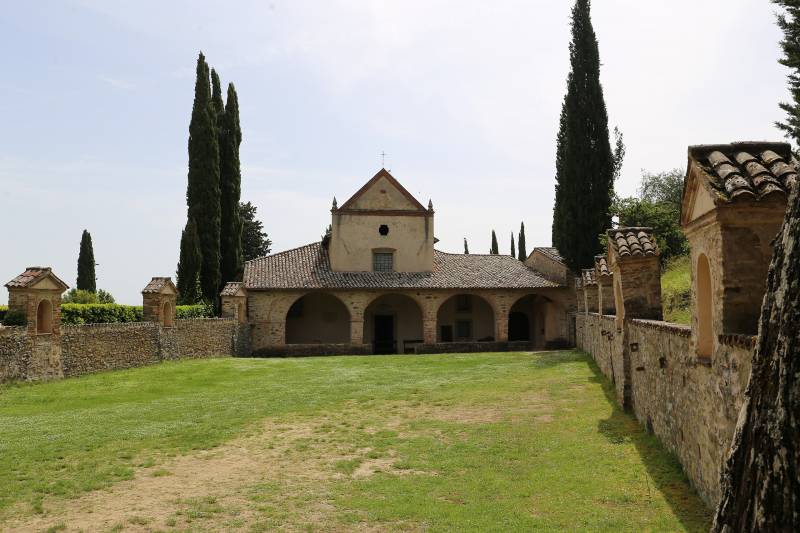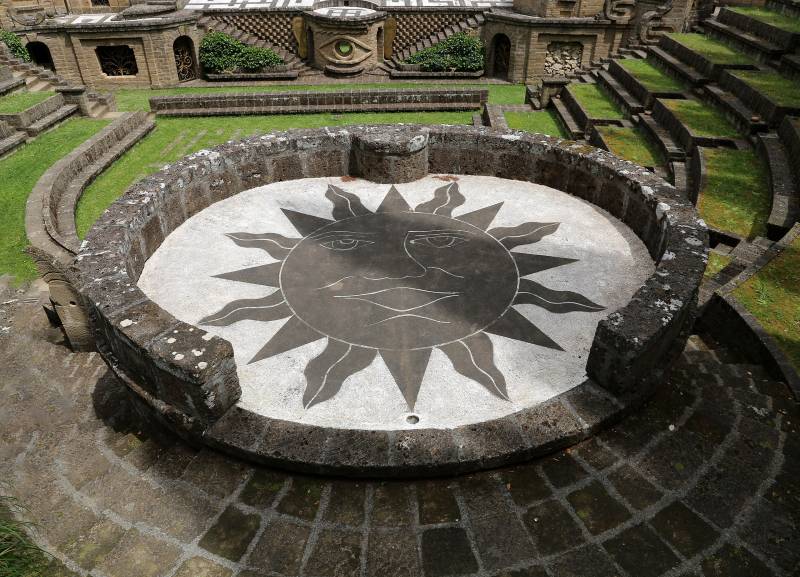There are cities, most of them, which are born for residential purposes or as commercial centers. Others started out as military outposts in the past and later grew to become urban landmarks. However, there is a city in Umbria with rather particular origins and characteristics: The Scarzuolaalso known as the “city-theater”.
La Scarzuola is found as mentioned in Umbria, more precisely in the locality Montegabbione (province of Terni). More than a real city, it represents a visionary project that moves along different spaces, understood as external dimensions but also as internal paths. Project that bears the signature of the Milanese architect Tomaso Buzzi.
La Scarzuola, the ideal city of Tomaso Buzzi
A singular place, where astrology, esotericism, spirituality and history come together in a surreal scenario. Tomaso Buzzi wanted to create La Scarzuola in an attempt to create “the ideal city“, where a path of symbolism based on the work” Hypnerotomachia Poliphili “(by Francesco Colonna, 1499) opens the way to a journey of self-discovery. Labyrinthine passages, antitheaters, towers, spiral walkways, stairs, towers and colonnades make all part of this work.
Why did La Scarzuola deserve the nickname of city-theater? Let’s take a few steps back to the origins of this place to find out. The project started in 1956, when Buzzi bought and restored the Franciscan convent. Alongside this historic building he built his ideal city, between 1958 and 1978, with the aim of creating a real “theatrical machine”. Seven theatrical stages, of which the Acropolis represents the most important. Buildings such as the Colosseum, the Pyramid, Villa Adriana and Villa d’Este, the Pantheon, the Temple of Vesta, the Clock Tower of Mantua, the Tower of the Winds and the gardens of Bomarzo are part of this magnificent theatrical scene.
Tomaso Buzzi he died in 1981, leaving his work unfinished. A purely intentional failure to conclude, at least according to what is contained in one of his famous statements regarding incompleteness and time: “I should get the charm of the Unfinished that is similar to that of the Ruins, which both give architecture that fourth dimension which is time.“. Buzzi then concluded by stating that”Also in the garden I would like to obtain the fourth dimension, that is time (and movement) by capturing the statues in their becoming (in their formation).“.
It is currently a private building, but accessible to visits on certain days and times. It is possible to book in advance the visit, which will last about two hours and will be guided by Marco Solari (heir and grandson of Tomaso Buzzi).
San Francesco and the ancient convent

Long before La Scarzuola was built it is said that he stayed here, in 1218, Saint Francis. The saint planted a rose and laurel. At the same point, it is said, a fountain miraculously gushed out; following this event he built his hut in this area. Years later the Counts of Marsicano wanted to build a Franciscan convent in that area.
There is a further connection between La Scarzuola and San Francesco. It seems that the name assigned to the Umbrian city-theater derives from the plant used by the saint, the scarzato build your own hut.
Featured photos: LigaDue – Wikimedia
La Scarzuola, detail: Sailko – Wikimedia
Franciscan convent: Sailko – Wikimedia

